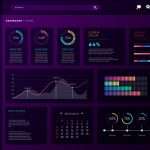
Agentic AI turns models into systems that can perceive, plan, act, and learn across multi-step tasks—owning outcomes, not just outputs. The guide below walks through principles, patterns, architecture, and production practices so builders can ship reliable, auditable agentic workflows in real environments.
Hire a Developer
What “agentic” really means
Agentic systems move beyond single-shot prompting by adding decision-making loops: they set goals, decompose tasks, choose tools, execute actions, and reflect to improve next steps. Unlike static automations or linear LLM pipelines, agentic workflows adapt to changing context and feedback, which makes them suitable for complex business processes that require autonomy with control.
Core building blocks
-
Objectives and constraints: Every agent needs a clear objective function plus guardrails that define allowed actions, data boundaries, and escalation rules; this creates autonomy with a safety envelope.
-
Reasoning and planning: Effective agents combine prompt strategies with planning methods (task decomposition, routing, and reflection) to reduce error rates and handle ambiguity in real tasks.
-
Tool use and environment: Tool connectors (APIs, databases, SaaS, RPA) let agents read and write to the world; standard protocols and typed contracts reduce misfires and enable auditable operations.
-
Memory and state: Short-term scratchpads, vector memory, and long-term state stores let agents preserve context, avoid repetition, and improve over time without drifting from policy.
-
Evaluation and observability: Success metrics, intervention rate, traces, and replayable logs convert “works in a demo” into “safe in production,” enabling continuous improvement cycles.
Design patterns to know
-
Planning pattern: Agents break complex goals into ordered subtasks, selecting strategies based on intermediate results; this improves reasoning and reduces hallucinations for open-ended problems.
-
Tool-use pattern: The system elevates an LLM from advisor to operator by safely invoking APIs and transactions; it’s the cornerstone for closing the loop from answer to action.
-
Reflection pattern: After each step (or at milestones), the agent critiques outputs against specs or policies, iterates, and only then commits; this boosts reliability without human review on every step.
-
Prompt chaining: Deterministic chains where each step’s output feeds the next are useful for well-understood flows; combine with checks to avoid error propagation.
-
Plan-and-execute orchestration: A planner drafts a sequence while an executor runs steps with tool feedback; evaluators can gate progress and trigger replanning when reality diverges.
Reference architecture
-
Front door: A task router receives goals and context, enforces authentication, and normalizes inputs including role, policy, and data scopes.
-
Orchestrator: A workflow engine coordinates planner, executor, critics, and tool adapters, emitting structured traces for every action and decision taken.
-
Memory and knowledge: Blend vector search for retrieval, a key–value store for scratch state, and a durable store for long-term learning and postmortems.
-
Tooling layer: Typed, idempotent tool adapters with dry-run and rollback modes reduce risk; rate limits and circuit breakers protect downstream systems.
-
Observability and policy: Centralized logging, event streams, evaluations, guardrails, and human approval checkpoints for sensitive operations create trust and auditability.
End-to-end workflow example (invoice dispute resolution)
-
Goal capture and scoping: The router validates tenant, amount thresholds, SLA, and data access before the agent engages, preventing overreach from the start.
-
Plan creation: The planner decomposes tasks—gather invoices, check contracts, compute deltas, propose resolution—then annotates required tools and policies per step.
-
Tool execution: The executor invokes finance APIs, document stores, and email/ticket systems using typed calls with retries, backoff, and sandboxed previews before commit.
-
Reflection and QA: A critic agent checks arithmetic, policy compliance, and tone; failures trigger replanning or human-in-the-loop gates for exceptions.
-
Logging and learning: Traces, diffs, and final outcomes are stored; recurring failure modes generate new tests and patterns that improve future runs.
Safety and governance
-
Action boundaries: Define allowlists per role and context; risky tools require human approval or staged commits with reversible operations to limit blast radius.
-
Policy-aware prompts: Inject policies and compliance templates at plan and execution time so constraints are continuously enforced, not just at input.
-
Data protection: Scope credentials and PII access by task; scrub logs; and segregate tenant data across memory layers to maintain confidentiality and compliance.
-
Auditable traces: Capture inputs, tool calls, outputs, and decisions with versioned prompts and models so incidents can be investigated and remediated quickly.
Evaluation and metrics
-
Task success and quality: Measure correctness vs. spec, SLA adherence, and rework; pair automatic checks with periodic human audits for high-stakes tasks.
-
Efficiency and cost: Track steps per task, tool latency, token usage, and caching hit rates to tune throughput and budgets without degrading quality.
-
Safety and oversight: Monitor intervention rates, denial ratios on risky actions, and compliance flags; rising trends inform new guardrails or re-training.
-
Learning velocity: Reflection efficacy, bug class resolution time, and improvement across releases indicate whether agents are genuinely learning.
Multi-agent collaboration
-
Role specialization: Define researcher, planner, executor, and critic roles to reduce cognitive load and create clearer handoffs with typed contracts between agents.
-
Coordination models: Use sequential flows for dependencies and parallel branches for independent subtasks; a router can dispatch based on skills and load.
-
Conflict resolution: Introduce a supervisor agent or policy engine to break ties and enforce priorities, ensuring convergence on a single, defensible outcome.
Tool design and reliability
-
Idempotency and retries: Design tool endpoints to be idempotent with request IDs; apply bounded retries and backoff to handle transient failures safely.
-
Previews and rollbacks: For mutating operations, require preview diffs and transactional commits; integrate rollback steps as first-class actions.
-
Schema-first I/O: Strongly-typed input/output contracts with validation minimize parsing errors and reduce prompt fragility when tools evolve.
-
Sandboxing: Execute risky steps (code, migrations, policy changes) in isolated environments with automatic promotion gates after checks pass.
Memory strategy
-
Short-term context: Use scratchpads for chain-of-thought artifacts and intermediate variables, cleared or summarized to control context growth.
-
Long-term memory: Store reusable facts, decisions, and postmortems; attach retrieval filters (tenant, task type, recency) to avoid irrelevant recalls.
-
Knowledge retrieval: Pair vector search with metadata filters and source citations so agents can justify actions and regenerate in downstream audits.
Scaling and performance
-
Caching and batching: Cache planner outputs and common retrievals; batch tool calls where safe; apply speculative decoding or smaller models for cheap steps.
-
Model routing: Use small, fast models for routine steps and larger models for hard reasoning; track route efficacy with per-step evals to reduce cost.
-
Horizontal scale: Make agents stateless between steps where possible and keep state in shared stores; scale orchestration workers behind queues.
Testing and release engineering
-
Scenario test suites: Encode real user stories with golden traces; replay deterministically with fixed seeds and mock tools to catch regressions.
-
Red teams and chaos: Inject adversarial prompts, tool failures, and data shifts; ensure the agent fails safe and escalates before causing harm.
-
Staged rollouts: Start with read-only or preview mode, then limited write access under approvals, and finally full autonomy on low-risk paths.
When to choose agentic vs. scripted automation
- Use agentic workflows when objectives are stable but paths are variable, data is messy, and adaptation adds real value (investigation, synthesis, negotiation).
- Prefer scripted RPA or linear LLM chains for deterministic, well-bounded tasks with little ambiguity and strict throughput constraints.
- Many systems benefit from hybrids: deterministic skeleton with agentic subroutines where variability and judgment matter most.
A minimal implementation blueprint
-
Start narrow: Pick a bounded workflow with clear success criteria (e.g., “resolve invoice disputes under threshold within SLA”), and define the allowed tools.
-
Ship a planner–executor–critic loop: Add preview-only gates and human approvals for financial actions; record full traces for every run from day one.
-
Iterate with data: Use failed traces to add tests, refine prompts/tools, and upgrade routing; expand autonomy only as safety and metrics justify it.
Final take
Agentic systems are production-ready when designed as auditable, tool-using, self-improving workflows—not just smarter prompts; with the right patterns, observability, and guardrails, teams can deliver durable ROI while keeping autonomy accountable.













